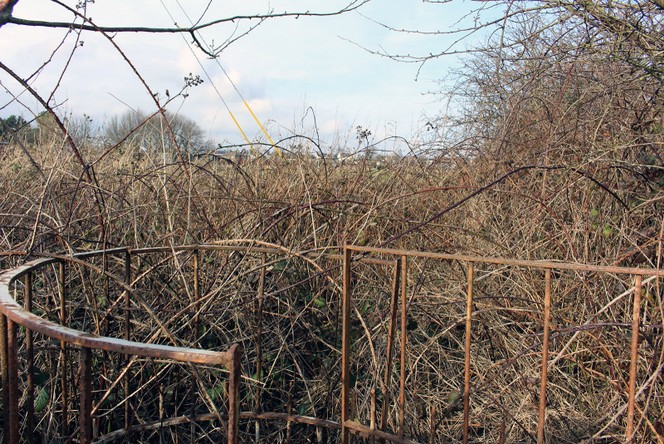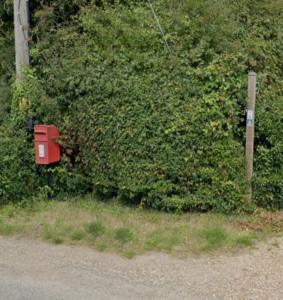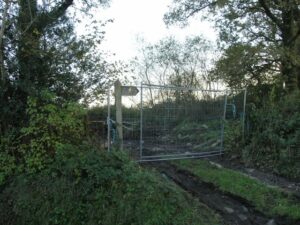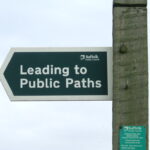

Using footpaths, bridleways and byways is a fantastic way to explore an area, leisurely travel around or simply spend an evening. Most rights of way are clear and well signed however on occasion a regular walker will come across a poorly marked path or even a blocked path. So what can you do when you can not use the path?
Overgrown Paths
Luckily, all users have a right to take a reasonable diversion around an obstruction or can attempt to remove the obstruction. For example, if a field is full of crops with no mowed path you are legally allowed to travel around the edge of the field to re-join the path once it leaves the field. Alternatively, you can also attempt to remove the obstruction. Some of the most beautiful paths are green lanes however they quickly become overgrown when not upkept (illustrated) and become unpassable. A good tip for walkers is to take secateurs with you so you can cut back overgrown brambles or bush making it easier for you to walk and ensure future users have a pleasant journey.
What Can You Do
For cases when secateurs won’t cut it you will have to report the issue to the council. Unfortunately, it is the case that many rights of way in the countryside are not as well kept up as they should be. Often this is simply because the route is not maintained by the council as nobody has reported the issue.
As a user of rights of way, it is vitally important you report any issue to the council. Councils simply cannot keep an eye on the vast network of paths themselves and, naturally, rely on ourselves to let them know of any problems. So if you come across an overgrown path, a path missing a signpost or even a rotten bridge you should make a note, or even take a photo, then contact the relevant council. Most councils have fantastic reporting systems on their website – for example Suffolk County Council has a usual tool here. In future, we hope to collect all the links to every council reporting tool available but, in the mean time, simply got to Google and do a quick search.
I have personally reported hundreds of issues over the years and their is nothing more satisfying seeing a right of way which has been blocked for years being reopened by yourself. Remember, look out for your fellow right of way users and keep the network healthy for the future by reporting.

Purposefully Blocked Paths
A more sinister, but unfortunately common, occurrence is also purposeful obstruction by a land owner. In some cases, a building or wall may have been build across the route. Often such footpaths have not been walked for decades and the land owner may believe the route is inactive and not, in fact, a right of way. In rarer cases, the land owners aggressively target rights of way to block them and prevent all users from using them.
In these cases, it is generally best to avoid using such paths. However, if you can take photos and record details to report to the relevant council. Personally, I have reported a number of purposefully blocked paths. The process to open them up is a very long one often requiring the council to take the land owners to court. However, it is your duty to report such issues to keep the right of way network healthy and useable for future walkers.
For the vast majority of paths however, you will come across no problems and can just have a relaxing stroll in the countryside. Rights of way are a precious commons for all of us to use, and enjoy, however we must collectively ensure they remain that way. Remember it is your right to use them and nobody can remove that.
